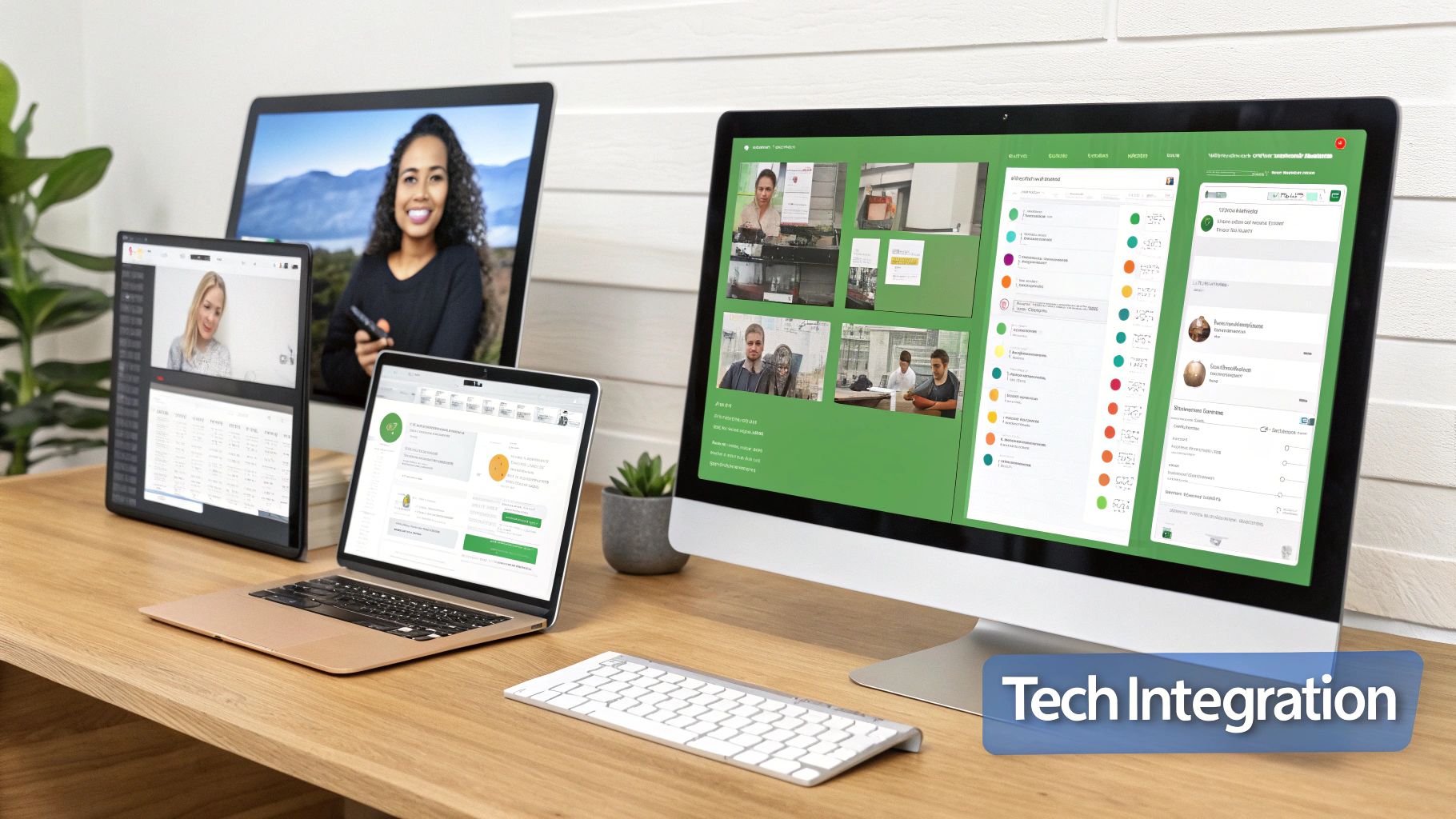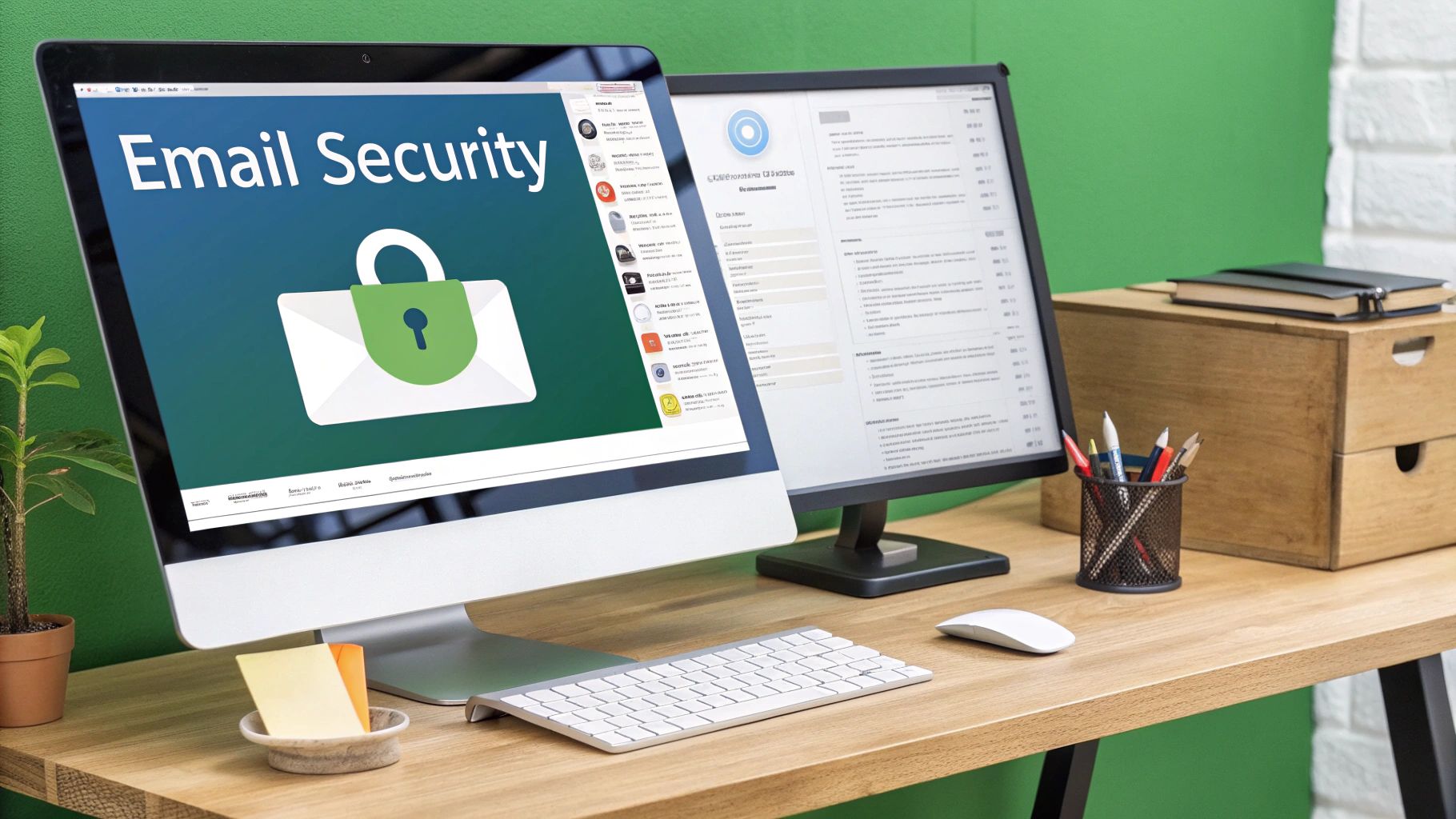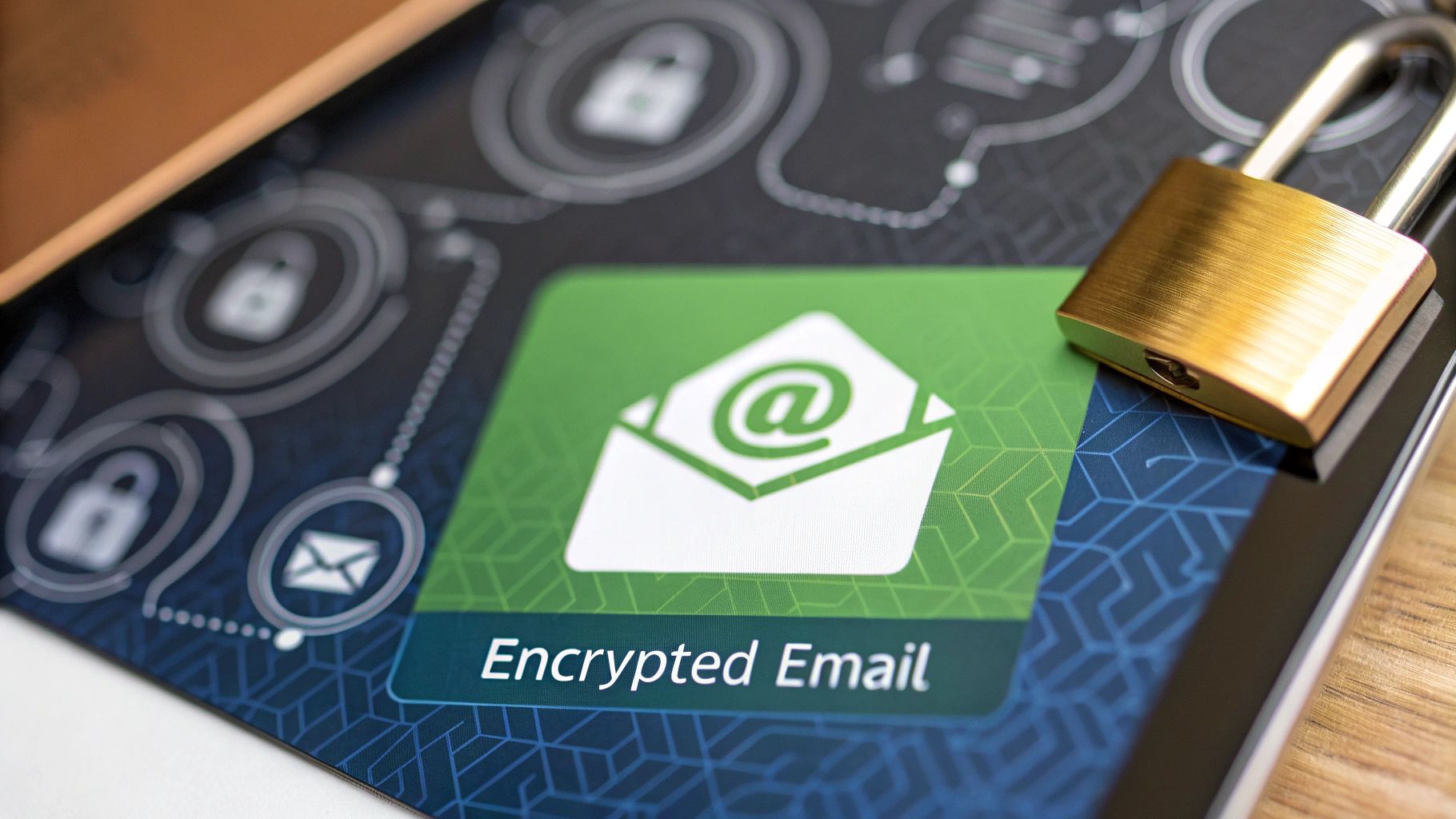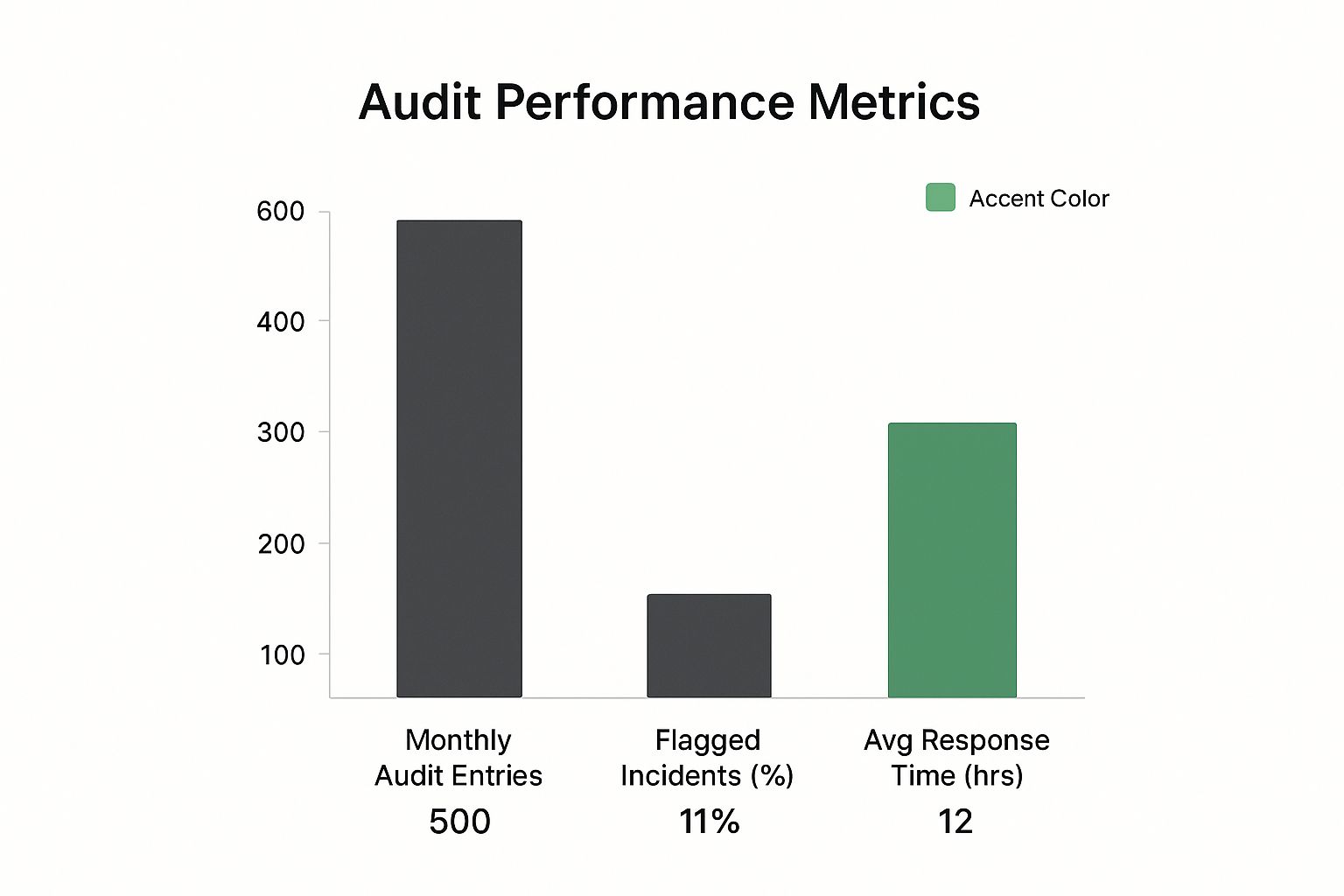Effective internal communication is the backbone of a successful, agile, and engaged organization. It's the system that ensures information flows smoothly, connecting leadership to employees, teams to each other, and the entire company to its core mission. When done right, it eliminates confusion, builds trust, and fosters a culture of transparency and collaboration. When it fails, the consequences are significant: disengaged employees, stalled projects, and a fractured company culture.
This guide provides a comprehensive roundup of actionable internal communication best practices designed to help you build a more connected and efficient workplace. We move beyond generic advice to offer specific, practical strategies you can implement immediately. You won't find vague theories here; instead, you'll get a clear roadmap for tangible improvements.
From establishing a multi-channel communication strategy to fostering leadership transparency, each best practice is broken down with implementation details and real-world examples. Readers will learn how to:
- Establish a regular communication cadence that builds predictability and trust.
- Segment employee audiences for more relevant and targeted messaging.
- Implement two-way communication channels that encourage feedback and active listening.
- Integrate digital tools to create a seamless and efficient communication ecosystem.
Whether you're an IT administrator securing company communications, a small business owner aiming to align your team, or a leader focused on improving employee engagement, these strategies will provide the framework you need. Let’s explore the essential practices that transform internal communication from a simple necessity into a powerful strategic advantage.
1. Multi-Channel Communication Strategy
A one-size-fits-all approach to internal communication is no longer effective in today's diverse and dynamic workplaces. A multi-channel communication strategy recognizes that employees have different work styles, locations, and preferences for receiving information. This approach involves thoughtfully selecting and utilizing a variety of channels, from instant messaging and email to intranets and mobile apps, to ensure critical messages are not only sent but also received and understood.

The core principle is to match the message, audience, and urgency with the most appropriate platform. By doing so, organizations can cut through the noise, improve engagement, and foster a more connected workforce. This is a foundational element of modern internal communication best practices because it respects employee preferences and the context of their work, whether they are at a desk, on a factory floor, or working remotely.
How to Implement a Multi-Channel Strategy
Implementing this strategy requires more than just adopting new tools; it demands a clear plan.
- Channel Mapping: Start by mapping each communication channel to a specific purpose. For example, use Slack or Microsoft Teams for urgent, real-time collaboration, email for formal announcements and detailed updates, and a company intranet or wiki for permanent resources like policies and onboarding materials.
- Establish Clear Guidelines: Create and share a simple guide that explains which channel to use for which type of communication. This prevents confusion and "channel fatigue," ensuring employees know where to look for specific information and where to post their own updates.
- Audit and Adapt: Regularly survey your employees to understand their channel preferences and pain points. Use analytics to see which channels have the highest engagement rates. Be prepared to adapt your strategy, retiring underused platforms and embracing new ones that better meet your team's needs.
Key Insight: The goal isn't to use every channel available, but to use the right channels effectively. A well-defined multi-channel strategy brings clarity and purpose to your communication ecosystem, rather than adding complexity.
Real-World Examples
Several industry leaders demonstrate the power of a deliberate multi-channel approach. Salesforce masterfully combines Slack for immediate team-based discussion, its own Chatter platform for company-wide social engagement, and traditional email for official corporate news. Similarly, Unilever effectively reaches its dispersed, frontline workforce through dedicated mobile apps, ensuring they receive timely updates and feel connected to the wider organization, while office-based staff use tools like Microsoft Teams.
These examples show that a successful strategy aligns tools with distinct communication needs, creating a cohesive and efficient flow of information. Even the choice of email provider can be strategic; discover how using a custom domain for your email can enhance professional communication and reinforce your brand internally.
2. Leadership Transparency and Open Communication
Transparency from leadership is the bedrock of a high-trust organizational culture. This practice involves leaders actively and openly sharing company information, including decision-making processes, financial performance, ongoing challenges, and future strategies with employees at all levels. It shifts the dynamic from a need-to-know basis to an environment where everyone is treated as a valued stakeholder in the company's journey.

The core principle is to demystify the "why" behind business decisions, which empowers employees, reduces workplace anxiety, and stifles the rumor mill. When leaders are candid about both wins and losses, they build credibility and foster a psychologically safe environment. This is a crucial component of modern internal communication best practices because it directly correlates to employee engagement, loyalty, and a shared sense of purpose.
How to Implement Leadership Transparency
Fostering transparency is a gradual process that requires commitment and consistency from the top down.
- Establish a Regular Cadence: Create a predictable schedule for communication. This could be a weekly email update from the CEO, a monthly all-hands meeting with an open Q&A session, or a quarterly business review accessible to all employees. Consistency builds anticipation and trust.
- Share the Good and the Bad: True transparency isn't just about celebrating successes. It’s also about openly discussing setbacks, missed targets, and strategic pivots. This honesty demonstrates respect for your team's intelligence and resilience.
- Encourage and Answer Questions: Create dedicated channels for employees to ask questions without fear of retribution. Whether it's a Slack channel, an anonymous submission form, or a segment in a town hall, leaders must be prepared to provide direct and honest answers, even when the answer is "we don't know yet."
- Use Storytelling: Frame complex business updates and data within a compelling narrative. Explain how a financial result or a market shift impacts the company's mission and the work of individual teams. This makes information more relatable and memorable.
Key Insight: Transparency is not about sharing every single detail; it's about sharing the details that matter. The goal is to provide context and clarity so that employees understand the direction of the organization and their role in its success.
Real-World Examples
Several forward-thinking companies have made transparency a cornerstone of their culture. Buffer, under the influence of co-founder Joel Gascoigne, is famous for its "radical transparency," publicly sharing everything from employee salary formulas to real-time revenue dashboards. During the COVID-19 crisis, Airbnb's CEO, Brian Chesky, was lauded for his compassionate and candid weekly emails to the entire company, clearly explaining difficult business realities. Similarly, Patagonia has long practiced transparency regarding its environmental impact and business challenges, reinforcing its mission-driven brand both internally and externally.
These leaders show that being open builds a stronger, more aligned organization. A key part of this is ensuring communications are clear and professional, which can be supported by strong internal policies. For instance, you can establish clear guidelines by implementing a comprehensive email policy for employees with smart rules that actually work to maintain a standard of professionalism in all communications.
3. Two-Way Communication and Active Listening
Effective internal communication is a dialogue, not a monologue. Traditional top-down communication models are outdated and can lead to disengaged employees who feel unheard and undervalued. A two-way communication approach flips this dynamic by creating a system where leadership actively seeks, listens to, and acts upon employee feedback, ideas, and concerns.

This method fosters a culture of mutual respect and psychological safety, encouraging employees to voice their honest opinions without fear of reprisal. By systematically incorporating employee perspectives into decision-making, organizations can unlock valuable insights, drive innovation, and improve operational efficiency. This is a crucial component of internal communication best practices because it transforms employees from passive recipients of information into active partners in the company's success.
How to Foster Two-Way Communication
Building a culture of active listening requires intentional structures and a genuine commitment from leadership.
- Establish Feedback Channels: Create multiple avenues for employees to share their thoughts. Implement regular pulse surveys for quick check-ins, conduct town hall meetings with open Q&A sessions, and provide anonymous channels like digital suggestion boxes for sensitive topics.
- Close the Feedback Loop: Simply collecting feedback is not enough. The most critical step is to communicate back to employees what was heard and what actions will be taken as a result. This demonstrates that their input is valued and prevents feedback fatigue.
- Train Managers in Active Listening: Equip middle managers, who are the primary link between leadership and frontline staff, with active listening skills. Training should cover techniques like paraphrasing, asking clarifying questions, and withholding judgment to ensure they can effectively facilitate open conversations within their teams.
Key Insight: True two-way communication isn't just about providing a platform for employees to speak; it's about creating a system where their voices are demonstrably heard, acknowledged, and integrated into the fabric of the organization.
Real-World Examples
Tech giants and retail leaders alike showcase the power of this approach. Google's famous "TGIF" (Thank God It's Friday) all-hands meetings, now held bi-weekly, are a prime example. These sessions, championed by leaders like Sundar Pichai, allow any employee to ask tough questions directly to the executive team. Similarly, Starbucks has a robust system for collecting feedback from its partners (employees) and has clear protocols for responding, ensuring that concerns raised in-store are addressed at a corporate level. HubSpot embeds this in its operations with "GSD Reviews" (Get Stuff Done), a continuous feedback process that encourages transparent dialogue about performance and processes.
These companies prove that when leadership genuinely listens, it builds trust and creates a more agile and resilient organization.
4. Clear and Consistent Messaging
In a world saturated with information, clarity and consistency are not just beneficial; they are essential for effective communication. This practice involves a systematic approach to crafting and delivering messages that are easily understood, aligned with organizational values, and uniform across all channels. When every communication, from a CEO’s address to a team-level update, reinforces the same core ideas and reflects a unified company voice, employees gain a clear sense of direction and purpose.

This principle, championed by leaders like Steve Jobs at Apple and Andy Grove at Intel, ensures that key messages cut through the noise and resonate with the audience. By eliminating conflicting information and jargon, organizations can build trust, minimize confusion, and ensure everyone is aligned with strategic goals. This is one of the most critical internal communication best practices because it forms the bedrock of a cohesive and mission-driven culture.
How to Implement Clear and Consistent Messaging
Achieving this requires discipline and a well-defined framework, not just good intentions.
- Develop a Style Guide: Create a comprehensive communication style guide that outlines your organization's tone of voice, key terminology, and formatting standards. Include examples for different scenarios, such as crisis communications, project updates, and company announcements, to ensure consistency.
- Establish Key Message Pillars: Identify three to five core messages that reflect your company's mission, values, and current strategic priorities. All significant communications should be filtered through these pillars to ensure they support the bigger picture.
- Use the 'So What?' Test: Before sending any communication, ask, "So what?" This simple test forces you to clarify why the message is relevant and important to the recipient. If you can’t easily articulate the benefit or required action for the employee, the message needs refinement.
Key Insight: Consistency doesn't mean robotic repetition. It means every message, while unique in its content, should feel like it comes from the same organization, reinforcing a unified identity and purpose.
Real-World Examples
Several iconic companies have mastered this practice. Apple, under Steve Jobs, perfected the art of simple, powerful messaging centered on innovation and user experience, a theme that permeates all its internal communications. Southwest Airlines consistently communicates with a fun, friendly, and employee-first tone that mirrors its public-facing brand and culture, making employees feel like part of a family.
Perhaps one of the most powerful examples is Johnson & Johnson, whose internal and external decisions are guided by its Credo. This document provides a clear, consistent ethical and operational framework, ensuring that even in a massive global organization, every communication is aligned with a core set of values. These companies prove that clear and consistent messaging is the key to building a strong, unified corporate culture.
5. Regular Communication Cadence and Scheduling
Sporadic, unpredictable communication creates anxiety and confusion, leaving employees wondering when the next important update will arrive. A regular communication cadence establishes a predictable rhythm for organizational updates, transforming internal communications from a reactive fire drill into a structured, reliable system. This involves setting a consistent schedule for key interactions, such as daily huddles, weekly team meetings, monthly all-hands sessions, and quarterly business reviews.
This structured approach manages expectations and builds trust. When employees know when and where to expect certain types of information, they can better plan their work and feel more secure in their knowledge of company happenings. This is one of the most powerful internal communication best practices because it fosters a culture of transparency and stability, making communication a dependable part of the organizational operating system.
How to Implement a Communication Cadence
Building a successful cadence requires a thoughtful alignment of communication frequency with business cycles and employee needs.
- Map Your Cadence: Align communication events with your organization's operational rhythm. Define the purpose, audience, and format for daily, weekly, monthly, and quarterly touchpoints. For example, daily stand-ups for operational updates, weekly team meetings for project progress, and monthly town halls for company-wide strategic news.
- Vary Formats and Channels: Maintain employee engagement by using a mix of formats. A weekly update might be a written summary delivered via email, while a monthly review could be an interactive video conference. The key is to match the format to the message's complexity and desired level of engagement.
- Build in Flexibility: A rigid schedule can be counterproductive. While the cadence provides a reliable framework, it must have built-in flexibility to accommodate urgent news or crisis communications. Designate a specific channel for immediate, out-of-band announcements so as not to disrupt the established rhythm.
- Communicate the Cadence: Once you have a plan, share it widely. Ensure every employee understands the schedule and the purpose of each communication event. This empowers them to participate effectively and reduces the mental load of guessing where to find information.
Key Insight: A consistent communication cadence isn't about rigid control; it's about creating a predictable environment where information flows reliably. It reduces noise and allows employees to focus on their work, confident they won't miss critical updates.
Real-World Examples
The discipline of a regular communication cadence is a hallmark of many high-performing companies. Amazon is famous for its rigorous weekly business reviews (WBRs), where leaders dive deep into metrics and operational performance, a practice that drives accountability and alignment. Spotify utilizes a well-defined structure of squad, tribe, and chapter meetings, creating regular cycles of communication that support its agile development model.
These examples highlight how a predictable rhythm of meetings and updates can reinforce company culture and drive strategic goals. For this system to work, employees must also manage their incoming information effectively; mastering basic skills can prevent overwhelm and keep your team productive. Discover some powerful email management tips to boost your productivity and support a healthy communication flow.
6. Employee Segmentation and Targeted Messaging
A blanket approach to communication rarely works in a diverse organization. Employee segmentation is a strategic practice that involves dividing your workforce into distinct groups based on relevant criteria and tailoring messages specifically for them. This recognizes that a software engineer in R&D has different information needs than a sales representative in the field or a frontline worker on the factory floor.
The core idea is to deliver relevance. By segmenting employees based on role, department, location, or even project involvement, organizations can ensure that communication is timely, pertinent, and actionable. This practice is a cornerstone of effective internal communication best practices because it drastically increases message relevance, reduces information overload, and demonstrates that the company understands and values the unique context of each employee's role.
How to Implement Employee Segmentation
Implementing this strategy goes beyond simply creating email distribution lists; it requires a deep understanding of your workforce.
- Develop Employee Personas: Start by conducting research to create detailed employee personas for key segments. A persona for a "Distribution Center Associate" will have different communication preferences, access to technology, and information needs than a "Corporate Marketing Manager." This informs how you craft and deliver messages.
- Create a Communication Matrix: Build a matrix that maps key message types (e.g., policy changes, project updates, leadership announcements) to specific employee segments. This visual tool clarifies who needs to know what, preventing both information gaps and unnecessary noise for irrelevant groups.
- Leverage Technology for Targeting: Use your internal communication tools to create segmented channels or audiences. Platforms like Slack, Microsoft Teams, and modern intranets allow for the creation of specific groups, ensuring you can push targeted content directly to the employees who need it most.
Key Insight: The goal of segmentation isn't to create silos, but to deliver precision. While core company-wide messages remain consistent, tailoring the details and delivery for each segment makes the information more impactful and engaging.
Real-World Examples
Top leaders have effectively used segmentation to drive major organizational initiatives. During General Motors' significant transformation, CEO Mary Barra championed segmented communication to ensure messages about restructuring and future vision were framed appropriately for factory workers, engineers, and corporate staff. Similarly, Microsoft's cultural shift under Satya Nadella involved targeted messaging that spoke directly to the unique roles of its technical, sales, and product teams, aligning everyone with a shared growth mindset while addressing their specific contributions.
Walmart also excels here by providing distinct communication streams for its store associates versus its distribution center workers, using mobile-first tools for the former and more traditional channels for the latter, ensuring relevance and accessibility for all.
7. Digital Communication Tools and Technology Integration
In the modern workplace, technology is not just a facilitator of work; it is the very environment where communication happens. The strategic selection and integration of digital tools are paramount for creating a connected, efficient, and collaborative organization. This involves more than simply adopting the latest software; it's about building a cohesive digital ecosystem with platforms like Slack, Microsoft Teams, and Zoom that aligns with your company culture and operational needs.
A well-integrated tech stack breaks down silos, enables real-time information sharing, and supports diverse work models, from in-office to fully remote. This is a critical component of contemporary internal communication best practices because the right tools empower employees to connect, collaborate, and access information seamlessly. Leaders like Stewart Butterfield of Slack and Eric Yuan of Zoom have championed this shift, proving that a thoughtful digital strategy can redefine workplace productivity and culture.
How to Implement Digital Tool Integration
Successfully integrating digital tools requires a strategic, people-first approach, not just a technical one.
- Conduct a Technology Audit: Before adding new tools, evaluate your current ones. Identify redundancies, gaps, and "tool fatigue" where employees are overwhelmed by too many platforms. The goal is to streamline, not just accumulate, technology.
- Provide Comprehensive Training: A tool is only as good as its user's ability to operate it. Offer robust initial training and continuous support for all communication platforms. Create a resource hub with tutorials, best practices, and FAQs to empower employees to use the tools effectively.
- Establish Digital Etiquette Guidelines: Define clear rules of engagement for each platform. Specify when to use a direct message versus a public channel, outline expectations for response times, and provide guidance on professional conduct in a digital-first environment. This prevents misunderstandings and fosters a respectful online culture.
- Regularly Assess Tool Effectiveness: Use a combination of user satisfaction surveys and analytics to gauge how well your tools are meeting employee needs. Be agile and ready to adjust your tech stack based on feedback and evolving work requirements.
Key Insight: Technology should reduce friction, not create it. The most successful integrations are those that feel invisible to the user, intuitively supporting their workflow and making communication effortless and more effective.
Real-World Examples
Leading tech companies often serve as the best examples by "eating their own dog food." Slack famously uses its own platform as the central nervous system for all internal communications, from project management and asynchronous stand-ups to company-wide announcements, drastically reducing internal email. Microsoft has seamlessly integrated Teams into its entire workflow, using it as the primary hub for chat, meetings, file sharing, and collaboration across its global workforce.
Similarly, Zoom has built a powerful video-first culture internally, demonstrating how prioritizing face-to-face virtual interaction can foster stronger connections and clarity, especially in a hybrid work setting. These organizations show that when digital tools are integrated thoughtfully, they become a powerful engine for building a more transparent and agile organization.
Internal Communication Best Practices Comparison
| Communication Approach | Implementation Complexity 🔄 | Resource Requirements ⚡ | Expected Outcomes 📊 | Ideal Use Cases 💡 | Key Advantages ⭐ |
|---|---|---|---|---|---|
| Multi-Channel Communication Strategy | High – complex channel integration and coordination | High – multiple platform licenses and training | Broad message reach and engagement | Organizations with diverse workforce communication needs | Accommodates preferences; redundancy; multi-format |
| Leadership Transparency and Open Communication | Medium – requires leadership commitment and careful balance | Medium – time-intensive for executives | Builds trust, reduces rumors, increases loyalty | Companies prioritizing culture of openness and trust | Enhances credibility; reduces speculation |
| Two-Way Communication and Active Listening | Medium to High – ongoing feedback processes | Medium – managing multiple feedback channels | Higher engagement, innovation, ownership | Organizations promoting collaboration and innovation | Improves satisfaction; detects issues early |
| Clear and Consistent Messaging | Medium – requires upfront planning and coordination | Medium – development of style guides and updates | Reduced confusion; stronger brand and culture | Firms needing unified internal branding and clarity | Builds trust; improves comprehension |
| Regular Communication Cadence and Scheduling | Medium – establishing reliable rhythms and formats | Medium – scheduling and maintaining discipline | Predictability; reliable information flow | Environments requiring steady and structured updates | Reduces anxiety; builds habits |
| Employee Segmentation and Targeted Messaging | High – complex audience analysis and message tailoring | High – customization and management overhead | Increased relevance and engagement | Large, diverse workforces with varied communication needs | Reduces overload; improves message effectiveness |
| Digital Communication Tools and Technology Integration | High – tool selection, integration, training | High – platform costs, ongoing support | Real-time collaboration; scalability | Remote/hybrid workplaces needing tech-enabled communication | Enables remote work; data-driven insights |
Final Thoughts
We have explored a comprehensive framework of internal communication best practices, moving from high-level strategy to the granular details of execution. The journey from a disorganized, top-down communication model to a vibrant, multi-directional ecosystem is not an overnight transformation. It requires dedication, strategic planning, and a genuine commitment from every level of the organization, especially leadership. The principles we've discussed are not just isolated tactics; they are interconnected components of a holistic system designed to foster a more informed, engaged, and unified workforce.
Recapping our journey, we started by establishing the necessity of a multi-channel communication strategy. This isn't about using every tool available, but about strategically selecting the right channel for the right message and audience, ensuring information is both accessible and impactful. We then underscored the profound influence of leadership transparency and open communication. When leaders model vulnerability and honesty, they create a culture of psychological safety where authentic dialogue can thrive. This directly enables two-way communication and active listening, transforming monologues into conversations and ensuring every employee feels heard and valued.
From there, we delved into the mechanics of effective messaging. We highlighted the importance of clear and consistent messaging to eliminate confusion and build trust, alongside establishing a regular communication cadence to create predictability and reliability. Finally, we examined the more advanced, tactical elements of employee segmentation for targeted relevance and the critical role of integrating the right digital communication tools to power the entire system. Each of these pillars works in concert with the others. Without a clear cadence, even the best multi-channel strategy will falter. Without leadership buy-in, even the most sophisticated feedback tools will go unused.
From Theory to Action: Your Next Steps
Mastering these internal communication best practices is more than an operational upgrade; it's a strategic imperative. The dividends are clear: higher employee engagement, improved morale, greater agility in the face of change, and a stronger bottom line. A workforce that is well-informed is a workforce that is empowered to make better decisions, innovate, and contribute to the company's mission with purpose.
To translate these insights into tangible results, consider the following actionable steps:
- Conduct a Communication Audit: Before implementing changes, you need a baseline. Survey your employees to understand their current perceptions of internal communication. Which channels do they prefer? Do they feel informed? Do they feel heard? Use this data to identify your biggest gaps and opportunities.
- Form a Cross-Functional Task Force: Internal communication is not solely an HR or comms function. Assemble a small team with representatives from different departments and levels to champion this initiative. This ensures diverse perspectives are considered and promotes widespread buy-in.
- Start with a Single, High-Impact Change: Don't try to boil the ocean. Pick one or two practices from this list to implement first. Perhaps it’s establishing a predictable weekly all-hands meeting (cadence) or launching a new, dedicated channel for leadership Q&As (two-way communication). Secure an early win to build momentum.
Ultimately, effective internal communication is the connective tissue of a healthy organization. It is the system that carries your culture, values, and strategic objectives to every corner of the business. By investing in these practices, you are not just improving processes; you are investing in your people, your culture, and the long-term resilience of your entire enterprise. The goal is to build an organization where information flows freely, feedback is welcomed, and every employee feels like an essential part of a shared journey.
Ready to build a more secure and efficient communication foundation? Typewire provides a privacy-first, ad-free email platform designed for businesses that demand security and control. With custom domains, easy user management, and powerful collaboration tools, Typewire helps you implement key internal communication best practices with confidence.






